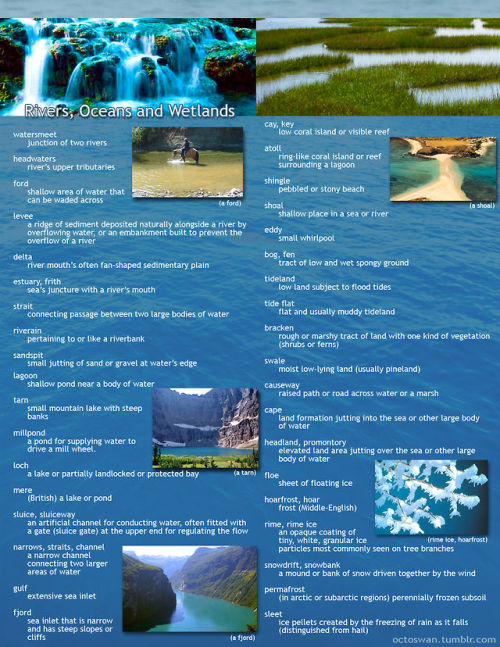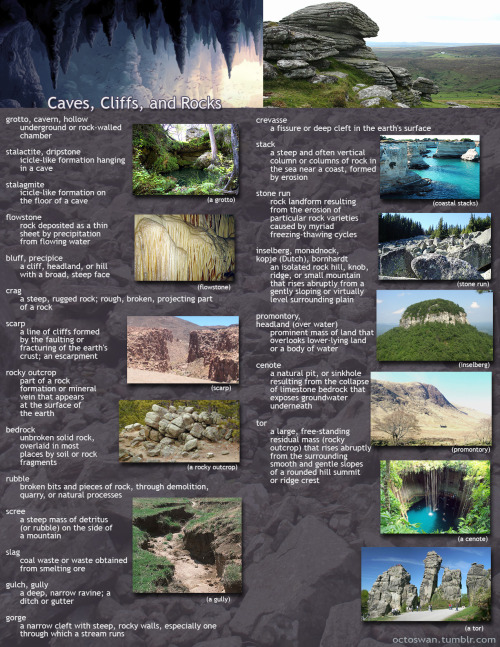LETS TALK ABOUT SPARRING
LETS TALK ABOUT SPARRING
I’ve read a lot of fics, have seen many shows, and have watched many movies that are completely inaccurate when it comes to sparring. NOW, i know it’s fiction, and I greatly enjoy it nonetheless, but I would like to share a few things with you, as a person who trains in Historical European Martial Arts (HEMA). There are a few general things in this, as well as stuff more focused to a certain european weapon. (this is all Historical European stuff, obviously if you’re writing for a different region, this probably won’t apply that much.)
SPARRING
-you don’t practice with real sharp swords. Never. It’s incredibly dangerous, especially since sparring is trying to practice your killing/injuring skills. In older times, you would use wood, maybe wrapped in leather or canvas to practice. Today, you use weighted nylon swords/weapons, and you usually wear a mask while doing so. Steel is and was an option, but the blade will be completely dull, and the tip will be bent over itself.
-It’s practically impossible to knock someone off their feet while sparring, unless you are hooking your foot or weapon behind their leg. It’s hard to push back and cause someone to fall, since they can just retreat back a bit.
-YOU. DON’T. SPEND. HOURS. SPARRING. ESPECIALLY WITHOUT A BREAK. It’s exhausting, the most people usually go is 10 minutes before they have a break. During Training, you only spar for about 2-5 minutes before stopping and having a rest.
-You try your hardest never to cross your feet. It’s dangerous and it unbalances you. Your opponent can take advantage of you easily.
-Usually, you want to strike your opponent with the last ¼ of your blade, basically just the tip and a little below. That’s the sharpest point, and you get the most force behind it.
-Swords aren’t super heavy. Stop the giant, huge, I-can-barely-lift-this trope. Longswords are usually 3lbs. It’s not heavy when you pick it up. However, it gets heavy when you’re holding it up above your head for a while. Swords were not made to be heavy, especially since you would have to hold them up in battle for sometimes hours.
-It’s incredibly hard to engage in witty banter and such. You are constantly moving and trying to strike your opponent. Since it’s fiction, you can do what you want, but just know that trying to have a conversation while sparring is like trying to have one while running. It tires you out even more, and usually just comes out breathless and wheezy.
-Swords are not lightsabers. You cannot try and hurt someone with just any part of your blade. It will just annoy your opponent. Now, for sparring, you will want to focus on hitting your opponent with the edge of your blade, and you won’t really ever be trying to hit someone with the flat of your blade.
-In sparring, you will get hit. And get bruises. I count five from just 2 days ago. (Also reminder that bruises don’t form for 1-3 days.) If you happened to get a hard thrust to the ribs, they will probably fracture. It happens. I haven’t had it personally, but those who’ve trained longer have. The worst injury I’ve gotten is a bruise on my chest that didn’t fade for nearly a month.
-Grip!!! You don’t clutch your sword super tight. No. It limits movement. My instructor taught me to hold firmly with the thumb, pointer, and middle finger, and use the other two as more guiding fingers. You swing your sword with your wrist, not a big giant arm movement. That is tiring and slow.
I will be focusing on using a one handed sword in this next bit, specifically a Scottish Regimental Broadsword. A basic sword to build off of.
-FOOTWORK. It’s not a super complicated series of perfectly planned out steps. It just isn’t. With Regimental Broadsword (which is what I will focus on, since it’s what I’ve trained with most), you have to have a good base (rear-weighted stance, front foot pointed at your opponent, back foot turned sideways), and then once you have that, you just have to move around and try not to get hit.
-Slipping. (Continuation of footwork). With a rear-weighted stance, the goal is to be able to move the front foot anywhere. You should actually be able to keep your front foot an inch off the ground without having to adjust your back foot. Slipping is when this comes in handy. If your opponent takes a swing at your front leg, you should be able to just slip it back to go next to your other foot, and swing your sword up to get your opponents head. Slipping is really important.
-Advance and Retreat (other continuation of footwork). While moving forward or back, you always want to feel the ground with a heel-toe movement, so you can tell if there are rocks or branches and such. Advancing, you want to move your front leg first. Retreating, your back leg.
-Traversing (last continuation of footwork)(maybe). Transversing is basically advancing in on your opponent in a circular motion. You’re trying to get close and personal. Reminder to not cross your feet. You will loose balance and probably end up getting whacked with a sword. Traversing is a spiral motion sort of. Your opponent can avoid getting trapped If they do it as well.
I will probably come back and add more soon, because there’s more I know, but can’t remember at the moment.
More Posts from Catalystcorvid and Others
Just a quick note from your friendly neighborhood bookworm/indie author
if you use kindle for the majority of your library, they will be shutting down the function that allows you to download your files and transfer them via USB on the 26th of February. Which doesn't sound like a huge deal, but this also means that if a book is taken off Amazon for any reason—like it being banned—they can scrape it off your kindle as well. So maybe backup your library?





I made these as a way to compile all the geographical vocabulary that I thought was useful and interesting for writers. Some descriptors share categories, and some are simplified, but for the most part everything is in its proper place. Not all the words are as useable as others, and some might take tricky wording to pull off, but I hope these prove useful to all you writers out there!
(save the images to zoom in on the pics)
Also picking up new books you’ve never heard of before because the premise sounds neat or the cover is pretty or it’s on a themed library display or you’re just trying to read your library’s entire catalogue of 90s cyberpunk is just fun. Sometimes it’s not your thing but you get to mull over new ideas or the diversity of people and opinions and thoughts in the world. Sometimes you discover your new favorite book of all time
"sometimes I want to win. And sometimes I want to lose so badly I can taste it."
Worlds in Worlds, Bonfire Opera : Poems. -- Danusha Laméris.
Failing and Flying
Jack Gilbert. Refusing Heaven, 2005.
Everyone forgets that Icarus also flew. It’s the same when love comes to an end, or the marriage fails and people say they knew it was a mistake, that everybody said it would never work. That she was old enough to know better. But anything worth doing is worth doing badly.
Like being there by that summer ocean on the other side of the island while love was fading out of her, the stars burning so extravagantly those nights that anyone could tell you they would never last.
Every morning she was asleep in my bed like a visitation, the gentleness in her like antelope standing in the dawn mist.
Each afternoon I watched her coming back through the hot stony field after swimming, the sea light behind her and the huge sky on the other side of that. Listened to her while we ate lunch. How can they say the marriage failed? Like the people who came back from Provence (when it was Provence) and said it was pretty but the food was greasy.
I believe Icarus was not failing as he fell, but just coming to the end of his triumph.

Hey! Last night this blogged ticked over the 100 follower count without me noticing. Das so cool.
Horse terms for writers

Gelding - An adult male horse (3 years or older) that’s been neutered.
Stallion - An adult male horse (3 years or older) that is not neutered.
Mare - An adult female horse (3 years or older), used interchangeable for both fixed and unfixed female horses.
Pony - A full grown horse under 14.2 hands.
Foal - A newborn horse.
Weanling - A colt or filly that is 6-12 months.
Yearling - A horse between 1-2 years old.
Colt - A male horse under 3 years old.
Filly - A female horse under 3 years old.
Hand - Measurement of how tall a horse is, one hand = four inches.
Tack - Riding equipment.
Halter - Headgear you put on a horse to lead them, can be made of leather or fabric.
Gait - Speeds a horse can got.
Trot - Gait faster than a walk but slower than a canter.
Canter - Gait faster than a trot but slower than a gallop.
Gallop - Faster than a canter, basically the highest speed a horse can go.
Lunging - Exercising a horse by walking them in a circle, usually done with a halter and lunge rope.
Lunge Rope - A long rein/rope used when lunging a horse, typically 20-40 ft long.
Colic - Pain in a horse’s stomach ranging from mild to severe, can be fetal if not treated.
Cribbing/Windsucking - Biting onto a fence post and sucking in air, horses do this when they’re extremely bored.
Farrier - Someone who dresses and trims a horse’s hooves.
Bridle - Headgear used to control and maneuver a horse.
Bit - The metal mouthpiece of the bridle.
Frog - The triangular part of the inside of the hoof.
Rain rot - A fungal infection horses can get on their backs, easily treatable with antibiotics.
Mucking - Cleaning out a stall.
Hot blooded - Extremely energetic, excitable horses. Hot blooded horses are used for more speed driven tasks.
Cold blooded - Very low temperament, very relaxed horses. Cold blooded horses are used for more labor driven tasks.
Draft - Large, working horses.
Feathers - The long, fuzzy fur on a horse’s hooves, usually found in Draft breeds.
-
 canadiansnek liked this · 2 months ago
canadiansnek liked this · 2 months ago -
 dazed-poltergeist reblogged this · 2 months ago
dazed-poltergeist reblogged this · 2 months ago -
 emoscot liked this · 2 months ago
emoscot liked this · 2 months ago -
 pwpe-the-shabuir reblogged this · 2 months ago
pwpe-the-shabuir reblogged this · 2 months ago -
 rolanroran liked this · 2 months ago
rolanroran liked this · 2 months ago -
 pwpe-the-shabuir liked this · 2 months ago
pwpe-the-shabuir liked this · 2 months ago -
 tami-isnt-here reblogged this · 2 months ago
tami-isnt-here reblogged this · 2 months ago -
 tami-isnt-here liked this · 2 months ago
tami-isnt-here liked this · 2 months ago -
 paws-of-the-quill reblogged this · 2 months ago
paws-of-the-quill reblogged this · 2 months ago -
 paws-of-the-quill liked this · 2 months ago
paws-of-the-quill liked this · 2 months ago -
 thornhands reblogged this · 2 months ago
thornhands reblogged this · 2 months ago -
 rainbowdragonball liked this · 3 months ago
rainbowdragonball liked this · 3 months ago -
 jimmie-the-kid reblogged this · 3 months ago
jimmie-the-kid reblogged this · 3 months ago -
 bonmoo-blog1 liked this · 3 months ago
bonmoo-blog1 liked this · 3 months ago -
 sinonymous-story-ideas liked this · 3 months ago
sinonymous-story-ideas liked this · 3 months ago -
 magneticmage liked this · 3 months ago
magneticmage liked this · 3 months ago -
 murdercatus liked this · 3 months ago
murdercatus liked this · 3 months ago -
 macawthestarwing liked this · 3 months ago
macawthestarwing liked this · 3 months ago -
 verysadnotsooldman liked this · 4 months ago
verysadnotsooldman liked this · 4 months ago -
 rickie-the-storyteller liked this · 4 months ago
rickie-the-storyteller liked this · 4 months ago -
 theink-stainedfolk liked this · 4 months ago
theink-stainedfolk liked this · 4 months ago -
 differentnighttale reblogged this · 4 months ago
differentnighttale reblogged this · 4 months ago -
 differentnighttale liked this · 4 months ago
differentnighttale liked this · 4 months ago -
 blargh-500 reblogged this · 4 months ago
blargh-500 reblogged this · 4 months ago -
 blargh-500 liked this · 4 months ago
blargh-500 liked this · 4 months ago -
 17panicattacksinatrenchcoat liked this · 4 months ago
17panicattacksinatrenchcoat liked this · 4 months ago -
 esperanzarchivos reblogged this · 4 months ago
esperanzarchivos reblogged this · 4 months ago -
 esperanzarchivos liked this · 4 months ago
esperanzarchivos liked this · 4 months ago -
 irisbellemoon liked this · 4 months ago
irisbellemoon liked this · 4 months ago -
 catalystcorvid reblogged this · 4 months ago
catalystcorvid reblogged this · 4 months ago -
 heckcareoxytwit liked this · 4 months ago
heckcareoxytwit liked this · 4 months ago -
 levi-choi liked this · 5 months ago
levi-choi liked this · 5 months ago -
 opera-medicinalia reblogged this · 5 months ago
opera-medicinalia reblogged this · 5 months ago -
 opera-medicinalia liked this · 5 months ago
opera-medicinalia liked this · 5 months ago -
 ellsterthinks reblogged this · 6 months ago
ellsterthinks reblogged this · 6 months ago -
 adamantium-skull liked this · 6 months ago
adamantium-skull liked this · 6 months ago -
 fatehascalled liked this · 6 months ago
fatehascalled liked this · 6 months ago -
 equisitevoid reblogged this · 7 months ago
equisitevoid reblogged this · 7 months ago -
 equisitevoid liked this · 7 months ago
equisitevoid liked this · 7 months ago -
 rayne-showers reblogged this · 7 months ago
rayne-showers reblogged this · 7 months ago -
 mypersonalfirepit reblogged this · 8 months ago
mypersonalfirepit reblogged this · 8 months ago -
 charmy2k reblogged this · 8 months ago
charmy2k reblogged this · 8 months ago -
 lunamura reblogged this · 8 months ago
lunamura reblogged this · 8 months ago -
 theda-rison liked this · 8 months ago
theda-rison liked this · 8 months ago -
 help2mepls liked this · 8 months ago
help2mepls liked this · 8 months ago -
 annita8942g8m51h liked this · 9 months ago
annita8942g8m51h liked this · 9 months ago -
 asche-winters reblogged this · 9 months ago
asche-winters reblogged this · 9 months ago

Hi I'm Crow, a 20-something hobbyist writer with a renewed love of reading. I post writing snippets, poetry & quotes from books that I like, as well as useful resources I find around the net. Accessibility and accurate sourcing are a priority. If you see me online, do me a favor and tell me to log off and go work on my novel. Icon by Ghostssmoke.
115 posts



